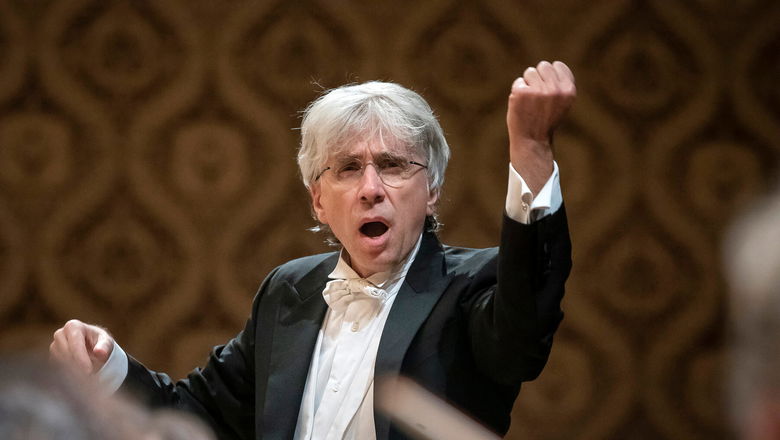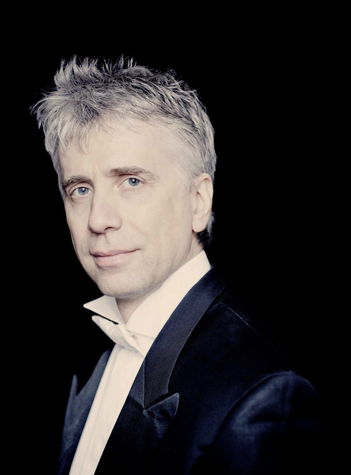For the 32-year-old Wolfgang Amadeus Mozart, 1788 was a year full of loss and disappointment. Upon his return from Prague, he obtained a position at the imperial court he had desired, but instead of being made court composer, he was put in charge of chamber music with less than half the salary. Until Mozart’s death in Vienna, the position of court composer remained vacant. His Prague opera Don Giovanni got a chilly reception in Vienna, and the lack of interest in his other compositions caused him financial problems. For this reason, that summer Mozart wrote three big symphonies that turned out to be his last: E flat major, K 543, G minor, K 550, and C major, K 551. There has been speculation about the purpose for which they were composed. Mozart may have intended to have them published by Artaria, which had printed Haydn’s Paris Symphonies not long beforehand. He may have been placing his hopes on a planned journey to London, where those symphonies could have served him well as an introduction. What is certain is that all three of these symphonies were received very positively soon after Mozart’s death, and they came to represent the phenomenon of symphonic music to the music critics of the period.
Mozart finished his Symphony in G minor on 25 July 1788 and assigned it the number 40, then it was given the number 550 in the Köchel catalogue. The work’s emotional power is highly original, and its unconventionality is also reflected by, among of things, the choice of key. According to the aesthetics of the period, a composition’s character corresponded to the key in which it was written. Mozart only wrote two minor-key symphonies (both in G minor, so this work is sometimes called the “Great G minor”), and there are also only two piano concertos in minor keys. At the same time, the symphony reflects features of an artistic movement known as Sturm und Drang (Storm and Stress), which emphasised strong emotions. There are also differences in its orchestration: the work does not call for otherwise commonly used trumpets and timpani, and Mozart even added clarinets to the definitive revision before those instruments were routinely employed in symphonies.
The first movement begins not with lush harmonies in accordance with tradition, but instead with just a quiet accompaniment by the strings, anticipating the mournfully sighing violin melody and forming an inconspicuous undertone throughout the movement. The contrasting chromatic second theme is in the major mode and is divided between the strings and the winds. In the recapitulation, it appears in the minor mode. There are more surprises as the symphony progresses. Against the background of the seemingly monotonous beginning of the second movement, the composer begins to play subtle games, creating tension with accents and melodic contrasts, in which the timbres of the wind instruments play an important role. The usual light, brilliant menuet is replaced by a weighty movement, and only the trio brings relief briefly. The finale is also chromatic, with a main theme for strings based on an arpeggio. Few works of the Classical era show the direct path to the Romanticism of the 19th century as clearly as does the Symphony in G minor.
Two weeks later, on 10 August 1788, Mozart made the following entry in a list of his compositions written in his own hand: “Symphony. 2 violins, 1 flute, 2 oboes, 2 bassoons, 2 French horns, 2 trumpets, timpani, violas, and basses.” His very last symphonic work contrasts with the tense, gloomy Symphony in G minor—its mood is jubilant with a tendency towards monumentality. Thanks to the huge fourth movement, the work began to be known as the “symphony with the fugal finale”. In 1808, the journal Allgemeine Musikalische Zeitung wrote that in Leipzig the work was “so popular among local lovers of the arts that it could not be denied them even for a single year.” The Symphony No. 41 in C major, K 551, was also highly regarded in London, where the score was published in 1810 with the motto “the highest triumph of instrumental composition”. The symphony has the enduring nickname “Jupiter”, which first appeared in the programme of the Edinburgh Music Festival in October 1819 and then in London at a concert of the Royal Philharmonic Society and in reviews of the concert. The symphony probably got its nickname from the London violinist and musical entrepreneur Johann Peter Salomon, emphasising the work’s quality by identifying it metaphorically with the king of the Roman gods. And the symphony’s nickname caught on.
The main theme of the first movement contains two mutually contrasting motifs: an energetic one in forte for the whole orchestra, and a more melodic one for the strings played piano. The violins and violas introduce the second theme, then the whole orchestra plays a forte third theme. The beginning of the second movement is imbued with inner calm and luminescence, yet it is only in this movement that we find any hint of the dark shadows so typical of the Symphony in G minor. That mood emerges in the second theme, characterised by the key of C minor and the unsettling rhythm of the violins. The violins are to be muted throughout the movement, dampening their sound. A gentle menuet frames a trio built on a contrast between its playful introduction and an energetic middle section. The fourth movement is one of the most remarkable pieces of music that Mozart ever wrote—this is probably the first time in the history of the symphony that a finale is given weight equal to or even greater that that of the first movement. Moreover, the composer displays an incredible synthesis of old and new, combining fugue with sonata form, “learned” polyphony with “gallant” homophony, the Baroque with Classicism. Right at the beginning, the second violins play the main theme, which is further treated fugally, taken up successively by the first violins, violas, and cellos. Mozart uses a total of four themes and combines them with each other! In addition, all of this contrapuntal mastery is built upon the clear foundation of sonata form. The Jupiter Symphony is regarded as a highpoint of 18th-century symphonic music for good reason.



